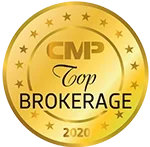Buying a home is an exciting journey, but it begins with one crucial step: mortgage pre-approval. For homebuyers, getting pre-approved not only helps determine your budget but also strengthens your offer when you’re ready to bid on a property. But what exactly does a mortgage pre-approval involve, and what documents do you need to provide?
This guide will walk you through the essential paperwork required for mortgage pre-approval in Canada, explain why each document is necessary, and provide helpful tips to make the process smoother. Whether you’re a first-time buyer, self-employed, or planning a second home, being prepared with the proper documentation can make all the difference.
Why Is Mortgage Pre‑Approval Important?
Before diving into the paperwork, it’s worth understanding why pre-approval is more than just a formality. When you’re pre-approved, a lender evaluates your financial profile—including income, debts, assets, and creditworthiness—to estimate how much they’re willing to lend you. This helps you:
- Set a realistic home-buying budget
- Lock in an interest rate for up to 120 days
- Strengthen your offer in a competitive market
- Identify any red flags early
It’s not a binding agreement, but it demonstrates to sellers that you’re serious and financially capable of making a purchase.
What Documents Do You Need for Mortgage Pre‑Approval in Canada?
Lenders use documentation to assess your financial reliability and borrowing capacity. While exact requirements vary slightly between lenders, the core documents remain consistent across most financial institutions.
Let’s break them down into categories:
1. Proof of Income
Lenders need to verify that you earn enough to afford mortgage payments. The required documents will depend on your employment type.
For Salaried or Hourly Employees:
- Recent Pay Stubs (usually last 2–3)
- Letter of Employment (stating job title, salary/hourly wage, and length of employment)
- T4 slips from the previous 2 years
- Notices of Assessment (NOAs) from the Canada Revenue Agency (optional but helpful)
For Self-Employed Individuals:
- T1 General tax returns for the last 2 years
- CRA Notices of Assessment for the previous 2 years
- Business financial statements
- Proof of business registration or incorporation
If you’re new to self-employment, be prepared to provide additional documentation, such as client contracts or business bank statements, to demonstrate income stability.
2. Proof of Down Payment and Source of Funds
Lenders are required to ensure that your down payment comes from a legitimate and verifiable source.
Acceptable Documents Include:
- Recent bank statements (usually 90 days) showing savings for the down payment
- Investment or RRSP statements
- Gift letter (if receiving down payment as a gift from a family member)
- Proof of sale of existing property, if applicable
Tip: If your funds are being transferred from a foreign account, provide foreign bank statements and currency conversion details.
3. Credit History
Lenders will pull your credit report to check your credit score, outstanding debts, and repayment history. You don’t need to provide this yourself—lenders do it as part of the pre-approval process.
However, you should:
- Check your credit score ahead of time using Equifax or TransUnion
- Dispute any errors on your report before applying
- Avoid new loans or large credit card purchases before and during the pre-approval process
A credit score of 680 or higher is generally considered ideal for securing the best mortgage rates.
4. Identification Documents
To verify your identity and legal status in Canada, you’ll need to submit valid government-issued identification.
Acceptable ID includes:
- Driver’s license
- Passport
- Permanent Resident card
- Work or study permit (for non-residents)
If you’re applying jointly with a spouse or partner, they’ll also need to provide identification.
5. Details of Existing Debts and Obligations
To calculate how much you can safely borrow, lenders need to understand your current financial obligations.
You may be asked to submit:
- Loan statements (auto, student, personal loans)
- Credit card statements
- Lines of credit balances
- Support or alimony payment agreements, if applicable
This helps lenders calculate your Total Debt Service (TDS) ratio, which ideally should be below 44%.
6. Information About the Property (if applicable)
If you’ve already chosen a home, some additional documents may be required:
- Purchase agreement
- MLS listing
- Property tax estimates
- Condo fees (if applicable)
However, if you’re getting pre-approved before house hunting, this section won’t apply—at least not yet.
How Long Does Pre‑Approval Take?
If you have all your documents ready, pre-approval can happen within 24 to 72 hours. However, delays may occur if your financial situation is complex or if documents are missing. Be sure to stay in touch with your mortgage broker or lender throughout the process—quick replies = faster results.
Common Mistakes to Avoid
Mortgage pre-approval is pretty straightforward, but these common errors can cause hiccups:
- Incomplete paperwork: Missing a T4 or an outdated bank statement can cause delays in the process.
- Large deposits without explanation: Always provide a paper trail for large transfers or lump sums.
- New credit activity: Avoid taking out loans or applying for new credit cards before pre-approval.
- Overestimating your affordability: Pre-approval tells you what you can borrow, not what you should borrow.
What Happens After You’re Pre‑Approved?
Once you’re pre-approved, you’ll receive a mortgage pre-approval letter outlining the maximum mortgage amount, interest rate, and term (usually valid for 90–120 days). With that in hand, you can:
- Shop confidently within your budget
- Make stronger offers when bidding on homes
- Lock in a competitive rate while you search
However, remember that pre-approval is not the same as final approval. Your finances will be re-evaluated before closing the mortgage deal, so continue managing your credit and income responsibly.
Special Notes for First‑Time Home Buyers
If you’re a first-time buyer in Canada, you may be eligible for additional programs such as:
- First-Time Home Buyer Incentive
- Home Buyers’ Plan (HBP): Withdraw up to $60,000 from your RRSP for your down payment
- Land Transfer Tax Rebates (provincial and federal)
Your mortgage broker can help you take full advantage of these incentives—and show you how to reflect them in your documentation.
Final Thoughts
Obtaining mortgage pre-approval in Canada is a crucial first step in the home-buying journey. It shows sellers you’re serious and gives you clarity on your budget. But the key to a smooth pre-approval process lies in having the proper documents ready.
From proof of income to down payment records and credit health, each piece of documentation paints a picture of your financial readiness. The more accurate and organized your documents, the more seamless your pre-approval experience will be. Contact AKAL Mortgages today to begin your pre-approval process and take the first confident step toward owning your dream home.




